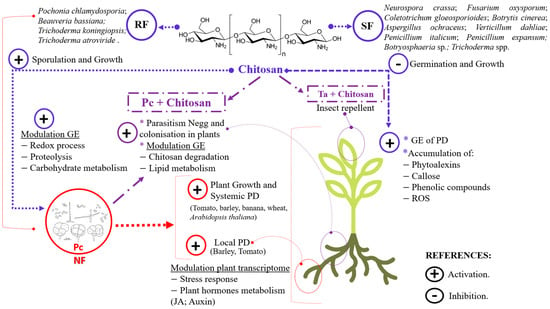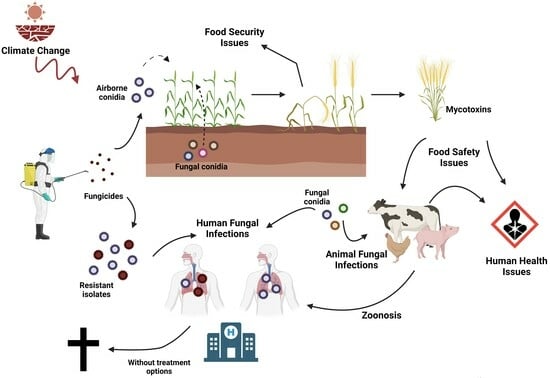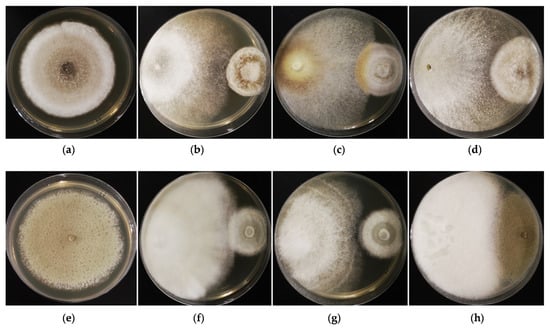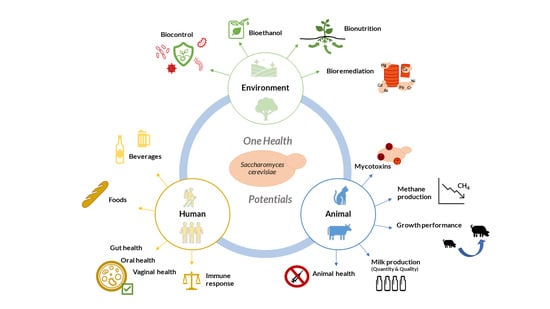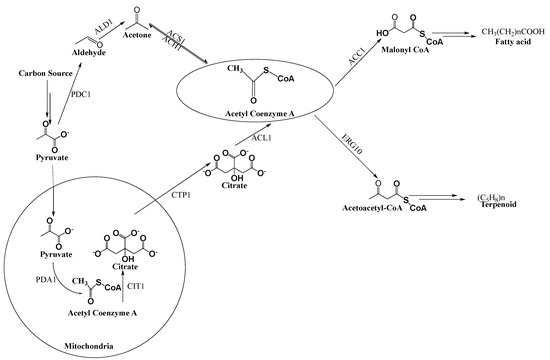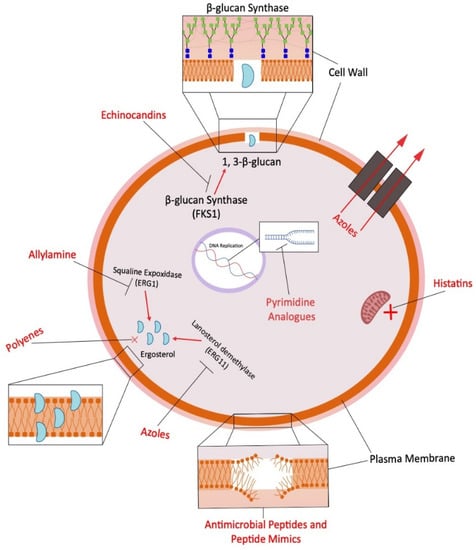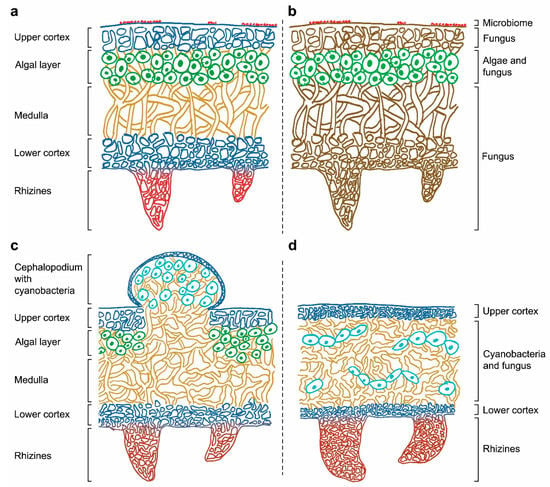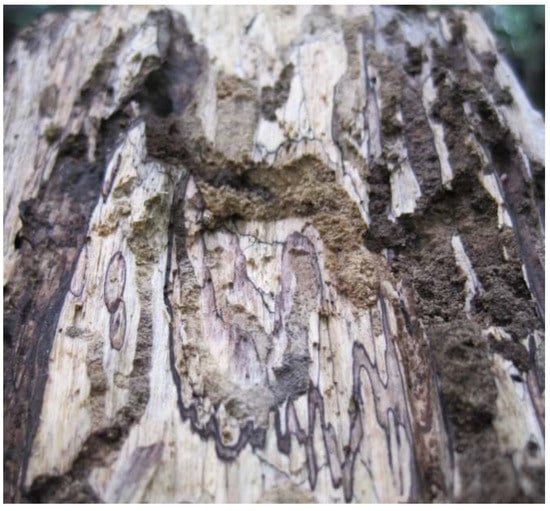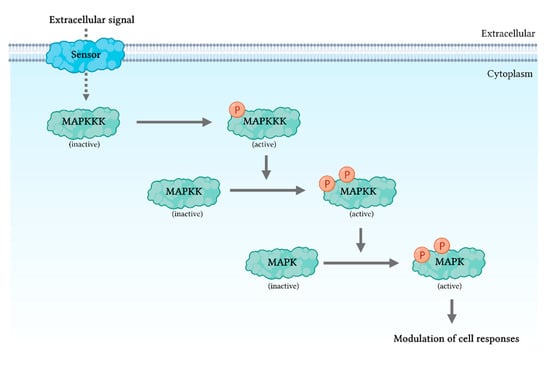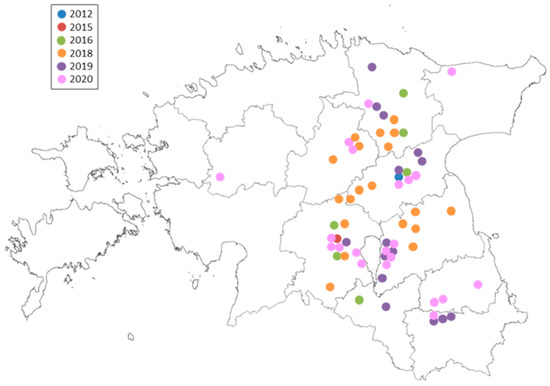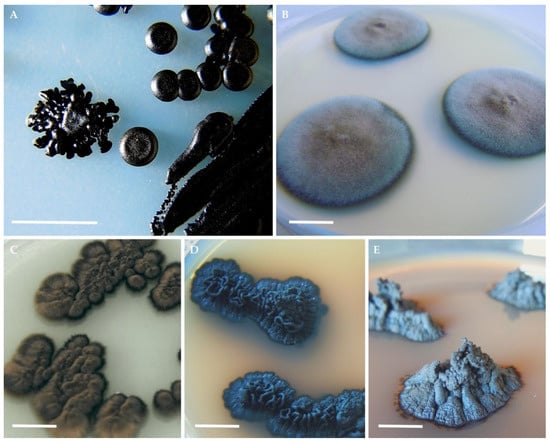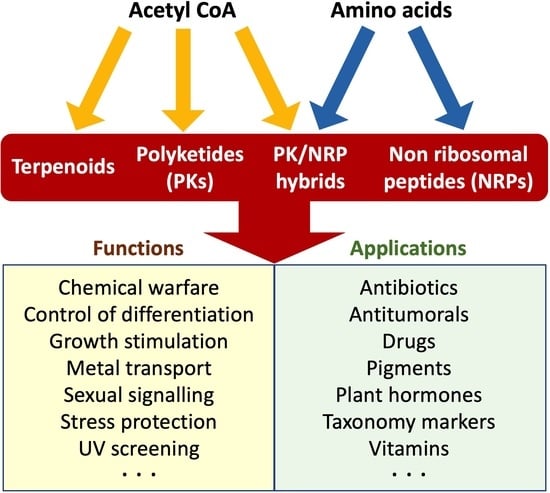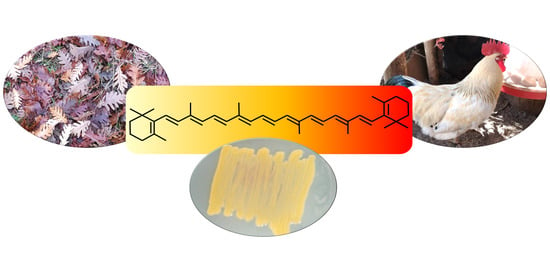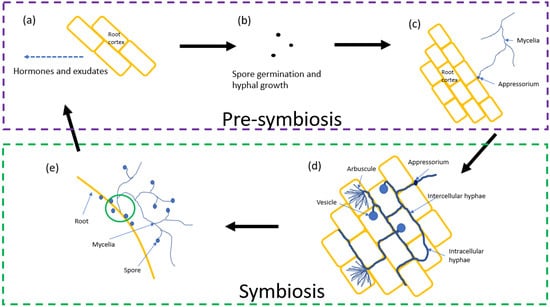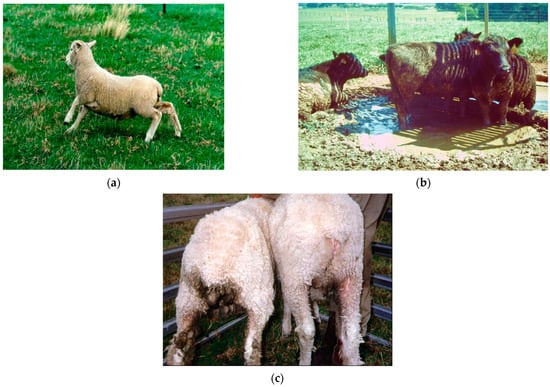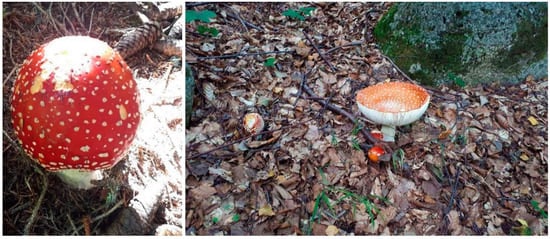Encyclopedia of Fungi
Share This Topical Collection
Editors
 Dr. Federico Lopez-Moya
Dr. Federico Lopez-Moya
 Dr. Federico Lopez-Moya
Dr. Federico Lopez-Moya
E-Mail
Website
Collection Editor
Multidisciplinary Institute for Environmental Studies/Department of Marine Sciences and Applied Biology, University of Alicante, Apdo. 99, E-03080 Alicante, Spain
Interests: biocontrol; nematophagous fungi; entomopathogenic fungi; chitosan; plant pathology; endophytes; fungal "omics"
Special Issues, Collections and Topics in MDPI journals
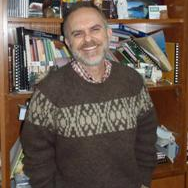 Prof. Dr. Luis Vicente López-Llorca
Prof. Dr. Luis Vicente López-Llorca
 Prof. Dr. Luis Vicente López-Llorca
Prof. Dr. Luis Vicente López-Llorca
E-Mail
Website
Collection Editor
Multidisciplinary Institute for Environmental Studies/Department of Marine Sciences and Applied Biology, University of Alicante, Apdo. 99, E-03080 Alicante, Spain
Interests: biocontrol; nematophagous fungi; entomopathogenic fungi; chitosan; plant pathology; endophytes; fungal "omics"
Special Issues, Collections and Topics in MDPI journals
Topical Collection Information
Dear Colleagues,
Fungi are amazing organisms. Just as other forms of life, they interact with their environment, especially with other living creatures. Their body, the mycelium, is a fascinating and plastic structure which can cover huge distances and, in particular, can adapt perfectly to the soil environment.
Mushrooms are just the top of this living iceberg, the cultures of which have been used throughout the world in medicine, the kitchen and for magic ceremonies, to give some examples. Fungal enzymes are the key to fungal success on Earth. Some of them are responsible for degrading the most recalcitrant polymers in nature and give industry tools for biotechnological transformations of large economic and social value. The capacity of biotransformation of fungi can perhaps help to ameliorate some issues related to Global Climate Change. Fungi also cause serious diseases, especially in plants, but they are largely responsible for their evolution, especially since they first colonized the land. Fungal secondary metabolites have changed the history of medicine helping to stop human pathogens which took a serious death toll just some decades ago. The fungal pharmacopoeia includes some of the most potent drugs and will do so in the near future when we explore new environments for fungi, such as the sea. Endophytic Biocontrol fungi can regulate populations of pests and pathogens, such as nematodes and insects, even under natural conditions.
The Encyclopedia of Fungi from MDPI will cover these and many other interesting aspects in a collection of ca. 50 chapters written by specialists from various fields in Academia, research institutions and industry.
Suggested Contents:
- The Fungal Cell: Structure and Biology
- Fungal Growth and morphogenesis
- Fungal Genetics and Genomics
- Fungal Biodiversity and Evolution
- Fungi and the Environment
- Fungal Ecology
- Fungal Animal Interactions
- Fungi and other microbes
- Fungi in Plants: Pathogens and Endophytes
- Applied and Environmental Mycology
- Fungi as Cell Factories: From Molecular to Systems Biology
- Fungi and Health. Antifungals
Prof. Dr. Luis Vicente López-Llorca
Dr. Federico Lopez-Moya
Collection Editors
Manuscript Submission Information
Manuscripts should be submitted online at www.mdpi.com by registering and logging in to this website. Once you are registered, click here to go to the submission form. Manuscripts can be submitted until the deadline. All submissions that pass pre-check are peer-reviewed. Accepted papers will be published continuously in the journal (as soon as accepted) and will be listed together on the collection website. Research articles, review articles as well as short communications are invited. For planned papers, a title and short abstract (about 100 words) can be sent to the Editorial Office for announcement on this website.
Submitted manuscripts should not have been published previously, nor be under consideration for publication elsewhere (except conference proceedings papers). All manuscripts are thoroughly refereed through a single-blind peer-review process. A guide for authors and other relevant information for submission of manuscripts is available on the Instructions for Authors page. Encyclopedia is an international peer-reviewed open access quarterly journal published by MDPI.
Please visit the Instructions for Authors page before submitting a manuscript.
The Article Processing Charge (APC) for publication in this open access journal is 1000 CHF (Swiss Francs).
Submitted papers should be well formatted and use good English. Authors may use MDPI's
English editing service prior to publication or during author revisions.
Published Papers (26 papers)
Open AccessReview
Modulation of the Host Defence System by Nematophagous Fungi and Chitosan
by
Carla Mariel Berosich, Federico Lopez-Moya and Luis Vicente Lopez-Llorca
Viewed by 857
Abstract
Nematophagous fungi (NFs), which are responsible for soil suppression of plant-parasitic nematodes, are multitrophic biocontrol agents. This raises the question of the transition between lifestyles (e.g., endophytism vs. egg parasitism). The NF
Pochonia chlamydosporia colonises food crops and promotes their growth and yield.
[...] Read more.
Nematophagous fungi (NFs), which are responsible for soil suppression of plant-parasitic nematodes, are multitrophic biocontrol agents. This raises the question of the transition between lifestyles (e.g., endophytism vs. egg parasitism). The NF
Pochonia chlamydosporia colonises food crops and promotes their growth and yield. When colonising the plant,
P. chlamydosporia induces the plant immunity (PI). However, it also evades the PI. To do this, both endophytic NF and pathogenic fungi (PF) secrete LysM effectors (LysM-effs). LysM effectors have been shown to have diverse functions in different organisms, including the protection of fungal chitin from plant chitinases.
P. chlamydosporia is resistant to chitosan, which modulates gene expression in fungi and plants and has antimicrobial properties.
P. chlamydosporia chitin deacetylases (CDA) and chitosanases (CSN) also help
P. chlamydosporia evade plant immunity, resist exogenous chitosan, and are induced during fungal infection of nematode eggs. NF-chitosan formulations are new biomanagement tools against plant parasitic nematodes, fungal wilt pathogens and insect pests that currently threaten food security crops. Furthermore, omics techniques are useful tools to elucidate the role of CDAs, CSNs, LysM-effs, adhesion proteins and carbohydrate-active enzymes in pathogen–BCA–plant interactions, adhesion and infection to nematode eggs and their modulation by chitosan.
Full article
►▼
Show Figures
Open AccessEntry
Saprophytic Filamentous Fungi against Helminths Affecting Captive Wild Animals
by
Rami Salmo, Cándido Viña, João Lozano, Antonio M. Palomero, José Ángel Hernández, Rodrigo Bonilla, Rita Sánchez-Andrade, Adolfo Paz-Silva, Luis M. Madeira de Carvalho, María Sol Arias and Cristiana Cazapal-Monteiro
Viewed by 607
Definition
In recent decades, important modifications have been introduced in zoos in order to guarantee the welfare of captive wild animals. Thus, many of these species are housed in enclosures with access to vegetation, where they can enjoy habitats close to those in their
[...] Read more.
In recent decades, important modifications have been introduced in zoos in order to guarantee the welfare of captive wild animals. Thus, many of these species are housed in enclosures with access to vegetation, where they can enjoy habitats close to those in their natural surroundings, interact with the environment, etc. These habitats present beneficial conditions for some species of parasites to survive and spread. This is a very similar problem to that affecting livestock, and the same solution, based on deworming, is currently being applied. However, the free-living stages of certain parasites that develop in the soil are responsible for high rates of ground contamination throughout the year, so that animals become infected soon after successful deworming, resulting in chemical parasiticides being frequently administered. Preventive measures are seldom considered, which worsens the situation. This entry summarizes the usefulness of the dissemination of certain saprophytic filamentous fungi with proven antagonism against some of the parasites.
Full article
►▼
Show Figures
Open AccessEntry
Prototheca spp. in Bovine Infections
by
Simona Nardoni and Francesca Mancianti
Viewed by 2066
Definition
Prototheca microalgae, although still considered uncommon etiologic agents, represent an insidious intruder, threatening cattle herd health and determining productive losses. Increasing numbers of clinical cases globally identified would indicate these microalgae as emerging pathogens. They can be isolated from a wide variety of
[...] Read more.
Prototheca microalgae, although still considered uncommon etiologic agents, represent an insidious intruder, threatening cattle herd health and determining productive losses. Increasing numbers of clinical cases globally identified would indicate these microalgae as emerging pathogens. They can be isolated from a wide variety of environmental and non-environmental sources, due also to their ability to produce biofilm. This ability to spread and contaminate a huge variety of substrates, as well as the high resistance to elevated temperatures, renders
Prototheca prevention a very hard task. In addition, early infection signs are subtle and difficult to detect. The poor response to conventional antimycotic drugs represents an additional challenge when facing this infection. Although it would seem unrealistic to completely eradicate the exposure risk of cows to these microalgae, the adoption of proper on-farm protocols and management, with the highest attention to hygiene measures, would be beneficial in reducing the magnitude of this problem. Keeping the attention focused on early diagnosis, together with the development of new, alternative, and effective agents and formulations, would be strongly advised to prevent, treat, and control
Prototheca infections.
Full article
Open AccessReview
Fungi in a One Health Perspective
by
Daniela Simões, Eugénia de Andrade and Raquel Sabino
Cited by 2 | Viewed by 3633
Abstract
Fungi constitute a diverse group with highly positive and negative impacts in different environments, having several natural roles and beneficial applications in human life, but also causing several concerns. Fungi can affect human health directly, but also indirectly by being detrimental for animal
[...] Read more.
Fungi constitute a diverse group with highly positive and negative impacts in different environments, having several natural roles and beneficial applications in human life, but also causing several concerns. Fungi can affect human health directly, but also indirectly by being detrimental for animal and plant health, influencing food safety and security. Climate changes are also affecting fungal distribution, prevalence, and their impact on different settings. Searching for sustainable solutions to deal with these issues is challenging due to the complex interactions among fungi and agricultural and forestry plants, animal production, environment, and human and animal health. In this way, the “One Health” approach may be useful to obtain some answers since it recognizes that human health is closely connected to animal and plant health, as well as to the shared environment. This review aims to explore and correlate each of those factors influencing human health in this “One Health” perspective. Thus, the impact of fungi on plants, human, and animal health, and the role of the environment as an influencing factor on these elements are discussed.
Full article
►▼
Show Figures
Open AccessReview
Fungal Endophytes: An Alternative Biocontrol Agent against Phytopathogenic Fungi
by
Alviti Kankanamalage Hasith Priyashantha, Samantha C. Karunarathna, Li Lu and Saowaluck Tibpromma
Cited by 1 | Viewed by 2433
Abstract
There has been renewed interest in the application of endophytic fungi to control phytopathogenic fungi, which cause significant damage to crop health, ultimately leading to losses in agricultural productivity. Endophytic fungi inhibit pathogens via different modes of action—mycoparasitism, competition (for nutrients and ecological
[...] Read more.
There has been renewed interest in the application of endophytic fungi to control phytopathogenic fungi, which cause significant damage to crop health, ultimately leading to losses in agricultural productivity. Endophytic fungi inhibit pathogens via different modes of action—mycoparasitism, competition (for nutrients and ecological niches), antibiosis, and induction of plant defense—thus demonstrating the ability to control a wide range of phytopathogenic fungi in different growth phases and habitats. However, many studies have been conducted under laboratory conditions, and there is a huge lack of studies in which real field testing was performed.
Aspergillus,
Clonostachys,
Coniothyrium,
Trichoderma, and
Verticillium have been proven to be the most effective fungal biocontrol agents.
Trichoderma is regarded as the most promising group in commercial formulations. In this study, we attempted to emphasize the significance of fungal endophytes in controlling phytopathogenic fungi, while reporting recent advances in endophytic biology and application.
Full article
►▼
Show Figures
Open AccessReview
Chytrids in Soil Environments: Unique Adaptations and Distributions
by
Deirdre G. Hanrahan-Tan, Osu Lilje and Linda Henderson
Cited by 3 | Viewed by 2610
Abstract
Chytridiomycota (zoosporic true fungi) have a consistent presence in soils and have been frequently identified within many diverse terrestrial environments. However, Chytridiomycota and other early-diverging fungi have low representation in whole-genome sequencing databases compared to Dikarya. New molecular techniques have provided insights into
[...] Read more.
Chytridiomycota (zoosporic true fungi) have a consistent presence in soils and have been frequently identified within many diverse terrestrial environments. However, Chytridiomycota and other early-diverging fungi have low representation in whole-genome sequencing databases compared to Dikarya. New molecular techniques have provided insights into the diversity and abundance of chytrids in soils and the changes in their populations both spatially and temporally. Chytrids complete their life cycle within rapidly changing soil environments where they may be more common within micropores due to protection from predation, desiccation, and extreme temperatures. Reproductive and morphological changes occur in response to environmental changes including pH, fluctuating nutrient concentrations, and metals at levels above toxic thresholds. Rhizoids share some features of hyphae, including the spatial regulation of branching and the ability to attach, adapt to, and proliferate in different substrates, albeit on a microscale. Soil chytrids provide a pool of novel enzymes and proteins which enable a range of lifestyles as saprotrophs or parasites, but also can be utilised as alternative tools with some biotechnological applications. Thus, 3D live-cell imaging and micromodels such as MicroCT may provide insight into zoospore functions and rhizoid plasticity, respectively, in response to various conditions. A combination of classical techniques of soil chytrid baiting with simultaneous molecular and ecological data will provide insights into temporal population changes in response to environmental change. The authors emphasise the need to review and improve DNA-based methodologies for identifying and quantifying chytrids within the soil microbiome to expand our knowledge of their taxonomy, abundance, diversity, and functionality within soil environments.
Full article
►▼
Show Figures
Open AccessEntry
Saccharomyces cerevisiae: Multifaceted Applications in One Health and the Achievement of Sustainable Development Goals
by
Nathalie Ballet, Sarah Renaud, Hugo Roume, Fanny George, Pascal Vandekerckove, Mickaël Boyer and Mickaël Durand-Dubief
Cited by 1 | Viewed by 4219
Definition
Saccharomyces cerevisiae (SC), a yeast with an extensive history in food and beverage fermentations, is increasingly acknowledged for its multifaceted application in promoting and benefiting all aspects of a ‘One Health’ approach, including the prevention and control of zoonoses. For instance, SC contributes
[...] Read more.
Saccharomyces cerevisiae (SC), a yeast with an extensive history in food and beverage fermentations, is increasingly acknowledged for its multifaceted application in promoting and benefiting all aspects of a ‘One Health’ approach, including the prevention and control of zoonoses. For instance, SC contributes to environmentally sustainable agricultural practices through the reduced use of toxic agents, thus minimizing air and soil pollution while enhancing crop quality. Additionally, this versatile yeast can improve the health of domestic and farm animals, leading to more efficient and sustainable food production, while fostering synergistic impacts across environmental, animal, and human health spheres. Moreover, SC directly applies benefits to human health by promoting improved nutrition, improving gut health through probiotics, as an alternative to antibiotics, and treating gastric disorders. By aligning with several Sustainable Development Goals (SDGs), SC is vital in advancing global health and well-being, environmental sustainability, and responsible consumption and production. This entry illustrates the numerous benefits of SC and highlights its significant impact on a global ‘One Health’ scale, promoting the achievement of SDGs through its unique characteristics and deeper understanding of its contribution to the One Health concept.
Full article
►▼
Show Figures
Open AccessEntry
Oleaginous Red Yeasts: Concomitant Producers of Triacylglycerides and Carotenoids
by
Irene Fakankun and David B. Levin
Cited by 3 | Viewed by 1696
Definition
Oleaginous red yeast species are colourful (usually having orange-pink-red hues) single cell microorganisms capable of producing valuable bioproducts including triacylglycerides (TAGs) for biodiesel and carotenoids for nutraceuticals. The name “oleaginous yeasts” is conferred based on their ability to synthesize and accumulate TAGs to
[...] Read more.
Oleaginous red yeast species are colourful (usually having orange-pink-red hues) single cell microorganisms capable of producing valuable bioproducts including triacylglycerides (TAGs) for biodiesel and carotenoids for nutraceuticals. The name “oleaginous yeasts” is conferred based on their ability to synthesize and accumulate TAGs to over 20% of their dry cell weight. Their colours are indicative of the presence of the major carotenoids present in them.
Full article
►▼
Show Figures
Open AccessEntry
The Mysteries of the White Truffle: Its Biology, Ecology and Cultivation
by
Simone Graziosi, Ian Robert Hall and Alessandra Zambonelli
Cited by 5 | Viewed by 4124
Definition
Tuber magnatum Picco is the most expensive of the truffles and a great deal of research has been carried out in an attempt to solve the mysteries of its ecology and biology. However, considerable work remains to be done particularly on those secrets
[...] Read more.
Tuber magnatum Picco is the most expensive of the truffles and a great deal of research has been carried out in an attempt to solve the mysteries of its ecology and biology. However, considerable work remains to be done particularly on those secrets of its life cycle that remain a mystery. It is known that
T. magnatum is heterothallic, but it has yet to be determined how fertilization occurs between the two strains of different mating types. It is also known that the white truffle is an ectomycorrhizal fungus, and its mycorrhizas can be produced in greenhouses, but then they seem to disappear in the field. The role of other soil microorganisms, fungi and bacteria, on its soil mycelial development and fructification is intriguing but is far from being completely understood. All these uncertainties have made the cultivation of
T. magnatum extremely difficult and only recently have we had the scientific proofs that it is possible. Even so, many questions remain unanswered and the management practices of
T. magnatum plantations are still to be better defined to also enable the taming of this truffle.
Full article
►▼
Show Figures
Open AccessEntry
Antifungals and Drug Resistance
by
Chowdhury Mobaswar Hossain, Lisa Kathleen Ryan, Meeta Gera, Sabyasachi Choudhuri, Nazmun Lyle, Kazi Asraf Ali and Gill Diamond
Cited by 19 | Viewed by 11583
Definition
Antifungal drugs prevent topical or invasive fungal infections (mycoses) either by stopping growth of fungi (termed fungistatic) or by killing the fungal cells (termed fungicidal). Antibiotics also prevent bacterial infections through either bacteriostatic or bactericidal mechanisms. These microorganisms successfully develop resistance against conventional
[...] Read more.
Antifungal drugs prevent topical or invasive fungal infections (mycoses) either by stopping growth of fungi (termed fungistatic) or by killing the fungal cells (termed fungicidal). Antibiotics also prevent bacterial infections through either bacteriostatic or bactericidal mechanisms. These microorganisms successfully develop resistance against conventional drugs that are designed to kill or stop them from multiplying. When a fungus no longer responds to antifungal drug treatments and continues to grow, this is known as antifungal drug resistance. Bacteria have an amazing capacity to become resistant to antibiotic action as well, and the effectiveness of the scarce antifungal arsenal is jeopardised by this antibiotic resistance, which poses a severe threat to public health.
Full article
►▼
Show Figures
Open AccessEntry
Fungal Metabolites in Human Health and Diseases—An Overview
by
Manal Esheli, Bathini Thissera, Hesham R. El-Seedi and Mostafa E. Rateb
Cited by 5 | Viewed by 3146
Definition
Fungi produce a wide range of secondary metabolites. Some of these metabolites are toxic to humans and cause various health disorders, ranging from acute poisoning to chronic diseases. Contrary to this, some fungal metabolites are valuable sources in therapeutics, such as penicillin. Herein,
[...] Read more.
Fungi produce a wide range of secondary metabolites. Some of these metabolites are toxic to humans and cause various health disorders, ranging from acute poisoning to chronic diseases. Contrary to this, some fungal metabolites are valuable sources in therapeutics, such as penicillin. Herein, researchers briefly highlight the role played by different fungal metabolites in human health and diseases and give an overview of the most common fungal genera.
Full article
►▼
Show Figures
Open AccessEntry
Effects of High Hydrostatic Pressure on Fungal Spores and Plant Bioactive Compounds
by
Carlos A. Pinto, Maria Holovicova, Marta Habanova, Vasco Lima, Ricardo V. Duarte, Francisco J. Barba and Jorge A. Saraiva
Cited by 3 | Viewed by 1954
Definition
Fungi, and their spores, are responsible for the spoilage of several foods and plants and are susceptible to contamination with mycotoxins, which have associated health hazards. In this context, proper methodologies for inactivating such fungi and controlling mycotoxin production are critical. High-pressure processing
[...] Read more.
Fungi, and their spores, are responsible for the spoilage of several foods and plants and are susceptible to contamination with mycotoxins, which have associated health hazards. In this context, proper methodologies for inactivating such fungi and controlling mycotoxin production are critical. High-pressure processing (HPP) has recently become popular as a nonthermal alternative to conventional thermal pasteurization processes. Even though HPP can effectively eliminate some fungal spores, some species, such as those from the genera
Byssochlamys,
Talaromyces, and
Aspergillus, are quite resistant to this treatment. Additionally, high pressure can also be used as a cold extraction technique for bioactive compounds from medicinal plants and other matrices (termed high pressure-assisted extraction, HPE). With this method, safe use for food, cosmetic, and pharmaceutical applications is guaranteed. This method simultaneously works (depending on the applied pressure level) as an extraction technique and induces the pasteurization effect on the extracts. This encyclopedia entry aims to highlight the effects of nonthermal HPP on fungal spores, the prevalence of mycotoxins in plant materials and how high pressure can be used as an extraction technique to produce high-value cold pasteurized extracts with biological activity.
Full article
►▼
Show Figures
Open AccessEntry
Lichen as Multipartner Symbiotic Relationships
by
Lourdes Morillas, Javier Roales, Cristina Cruz and Silvana Munzi
Cited by 4 | Viewed by 8033
Definition
Lichens have long been considered as composite organisms composed of algae and/or cyanobacteria hosted by a fungus in a mutualistic relationship. Other organisms have been gradually discovered within the lichen thalli, such as multiple algal species, yeasts, or even viruses. Of pivotal relevance
[...] Read more.
Lichens have long been considered as composite organisms composed of algae and/or cyanobacteria hosted by a fungus in a mutualistic relationship. Other organisms have been gradually discovered within the lichen thalli, such as multiple algal species, yeasts, or even viruses. Of pivotal relevance is the existence of the lichen microbiome, which is a community of microorganisms that can be found living together on the lichen surface. This community performs a growing number of functions. In this entry, we explore the journey of lichens being considered from a dual partnership to a multi-species symbiotic relationship.
Full article
►▼
Show Figures
Open AccessEntry
Cultures of Spalting
by
Seri C. Robinson
Viewed by 1903
Definition
Wood decayed and colored by fungi, colloquially known as ‘spalted wood’, has been a source of art and folklore across numerous cultures. From intarsia and marquetry in Italy and Germany to woodturning in the U.S. and carving and mythology in Chile, the uses
[...] Read more.
Wood decayed and colored by fungi, colloquially known as ‘spalted wood’, has been a source of art and folklore across numerous cultures. From intarsia and marquetry in Italy and Germany to woodturning in the U.S. and carving and mythology in Chile, the uses of, and stories about, spalted wood are explored, as well as how those have shaped their surrounding cultures as well as modern science.
Full article
►▼
Show Figures
Open AccessEntry
The Potential for Cellulose Deconstruction in Fungal Genomes
by
Renaud Berlemont
Cited by 1 | Viewed by 1910
Definition
Fungal cellulolytic enzymes are carbohydrate active enzymes (CAzymes) essential for the deconstruction of the plant cell wall. Cellulolytic activity is described in some glycoside hydrolases (GH-cellulases) and in auxiliary activities (AA-cellulases) families. Across environments, these enzymes are mostly produced by some fungi and
[...] Read more.
Fungal cellulolytic enzymes are carbohydrate active enzymes (CAzymes) essential for the deconstruction of the plant cell wall. Cellulolytic activity is described in some glycoside hydrolases (GH-cellulases) and in auxiliary activities (AA-cellulases) families. Across environments, these enzymes are mostly produced by some fungi and some bacteria. Cellulolytic fungi secrete these enzymes to deconstruct polysaccharides into simple and easy to metabolize oligo- and mono-saccharides. The fungal ability to degrade cellulose result from their repertoire of CAZymes-encoding genes targeting many substrates (e.g., xylan, arabinose). Over the past decade, the increased number of sequenced fungal genomes allowed the sequence-based identification of many new CAZyme-encoding genes. Together, the predicted cellulolytic enzymes constitute the fungal potential for cellulose deconstruction. As not all fungi have the same genetic makeup, identifying the potential for cellulose deconstruction across different lineages can help identify the various fungal strategies to access and degrade cellulose (conserved vs. variable genomic features) and highlight the evolution of cellulase-encoding genes. Here, the potential for cellulose deconstruction identified across publicly accessible, and published, fungal genomes is discussed.
Full article
►▼
Show Figures
Open AccessReview
Recent Advances in Research on Molecular Mechanisms of Fungal Signaling
by
Stefan Jacob, Sri Bühring and Katharina Bersching
Cited by 3 | Viewed by 2766
Abstract
Biochemical signaling is one of the key mechanisms to coordinate a living organism in all aspects of its life. It is still enigmatic how exactly cells and organisms deal with environmental signals and irritations precisely because of the limited number of signaling proteins
[...] Read more.
Biochemical signaling is one of the key mechanisms to coordinate a living organism in all aspects of its life. It is still enigmatic how exactly cells and organisms deal with environmental signals and irritations precisely because of the limited number of signaling proteins and a multitude of transitions inside and outside the cell. Many components of signaling pathways are functionally pleiotropic, which means they have several functions. A single stimulus often results in multiple responses, a distinct response can be triggered by numerous stimuli and signals initiated by different stimuli are often transduced via commonly used network components. This review sheds light on the most important molecular mechanisms of cellular signaling in fungi and consequently provides a comprehensive overview about the current state of research on the road to understand the impact of signal transduction in eukaryotic microorganisms.
Full article
►▼
Show Figures
Open AccessEntry
Entomopathogenic Fungi: Interactions and Applications
by
Spiridon Mantzoukas, Foteini Kitsiou, Dimitrios Natsiopoulos and Panagiotis A. Eliopoulos
Cited by 26 | Viewed by 12630
Definition
Entomopathogenic fungi are a special group of soil-dwelling microorganisms that infects and kills insects and other arthropods through cuticle penetration. They are currently used as biocontrol agents against insect plant pests and play a vital role in their management. Regardless that entomopathogenic fungi
[...] Read more.
Entomopathogenic fungi are a special group of soil-dwelling microorganisms that infects and kills insects and other arthropods through cuticle penetration. They are currently used as biocontrol agents against insect plant pests and play a vital role in their management. Regardless that entomopathogenic fungi are currently on the agriculture market, their full potential has not yet been utterly explored. Up to date substantial research has covered the topic revealing numerous uses in pest management but also on their ability as endophytes, assisting the plant host on growth and pathogen resistance. This article addresses the literature on entomopathogenic fungi through the years, noting their mode of action, advantages, potential applications, and prospects.
Full article
►▼
Show Figures
Open AccessEntry
Marine Fungi: Opportunities and Challenges
by
Micael F. M. Gonçalves, Ana C. Esteves and Artur Alves
Cited by 25 | Viewed by 9064
Definition
Marine fungi play a crucial role in energy flow and nutrient recycling, mediating the cycling of dissolved organic matter in marine environments. However, despite being a prolific group of organisms, marine fungi have been largely neglected for a long time. Besides their importance
[...] Read more.
Marine fungi play a crucial role in energy flow and nutrient recycling, mediating the cycling of dissolved organic matter in marine environments. However, despite being a prolific group of organisms, marine fungi have been largely neglected for a long time. Besides their importance in the marine food web, marine fungi represent an active source of natural products. Over the last years, researchers have focused on studying marine organisms to discover new metabolites with antibacterial, antiviral, and anticancer activities. Moreover, with the advances in high-throughput sequencing technologies and mass spectrometry techniques, genomic and metabolomic approaches have revealed to be of paramount importance in natural products discovery. The marine mycobiome includes many organisms still to be identified, and the ones already known are still underutilized in biotechnological applications. For this reason, it is undeniable that exploring the marine mycobiome including new habitats and substrates, even those of remote access, is fundamental for describing the true magnitude of the Earth’s mycobiome.
Full article
►▼
Show Figures
Open AccessEntry
Challenges in Ramularia collo-cygni Control
by
Andres Mäe and Riinu Kiiker
Cited by 1 | Viewed by 2716
Definition
Ramularia leaf spot (RLS), caused by the fungus
Ramularia collo-cygni, has recently become widespread in Europe. Succinate dehydrogenase inhibitor (SDHI) and demethylation inhibitor (DMI) fungicides are mainly applied for disease control on barley fields, but pathogen isolates with a reduced sensitivity can
[...] Read more.
Ramularia leaf spot (RLS), caused by the fungus
Ramularia collo-cygni, has recently become widespread in Europe. Succinate dehydrogenase inhibitor (SDHI) and demethylation inhibitor (DMI) fungicides are mainly applied for disease control on barley fields, but pathogen isolates with a reduced sensitivity can cause difficulties. There is an urgent need for new spring barley cultivars that are more resistant to RLS development and can inhibit
R. collo-cygni epidemics.
Full article
►▼
Show Figures
Open AccessEntry
Mucormycosis—Emerging Fungal Threats
by
Gianmarco Troiano and Nicola Nante
Cited by 1 | Viewed by 2258
Definition
Mucormycosis is an opportunistic fungal infection due to organisms of the
Zygomycetes class and the order of
Mucorales that can cause various types of infections. In recent years, an increasing phenomenon has been observed—invasive fungal infections especially in the healthcare setting. Among immucompromised
[...] Read more.
Mucormycosis is an opportunistic fungal infection due to organisms of the
Zygomycetes class and the order of
Mucorales that can cause various types of infections. In recent years, an increasing phenomenon has been observed—invasive fungal infections especially in the healthcare setting. Among immucompromised patients, an important clinical emergency could be represented by mucormycosis. The epidemiology of mucormycosis has shown an alarming trend and its incidence is rising globally. Four elements are fundamental for a successful treatment: rapid diagnosis, reduction of predisposing factors (if possible), surgical debridement of infected tissues, and appropriate antifungal therapy.
Full article
Open AccessEntry
Black Fungi Research: Out-of-This-World Implications
by
Donatella Tesei
Cited by 17 | Viewed by 7936
Definition
Black fungi are an ecological group of melanized fungi specialized in extremotolerance and assumed to be among the most stress-resistant eukaryotes on Earth. Multi-omics studies have provided significant evidence that they have a peculiar response to stress that differs considerably from that of
[...] Read more.
Black fungi are an ecological group of melanized fungi specialized in extremotolerance and assumed to be among the most stress-resistant eukaryotes on Earth. Multi-omics studies have provided significant evidence that they have a peculiar response to stress that differs considerably from that of common mesophilic hyphomycetes. Survival strategies displayed by these organisms have situated them as attractive models for astrobiology and, in general, for studies directed towards the definition of the actual limits for life. Moreover, the ascertained aptitude of black fungi for degradation of hazardous volatile pollutants and for plastic breakdown suggests prospective application of several species.
Full article
►▼
Show Figures
Open AccessEntry
Fungal Secondary Metabolism
by
Javier Avalos and M. Carmen Limón
Cited by 18 | Viewed by 10934
Definition
Fungal secondary metabolites (SMs) comprise a vast collection of compounds expendable for these organisms under laboratory conditions. They exhibit enormous chemical diversity, and usually belong to four major families: terpenoids, polyketides, non-ribosomal peptides, or a combination of the last two. Their functions are
[...] Read more.
Fungal secondary metabolites (SMs) comprise a vast collection of compounds expendable for these organisms under laboratory conditions. They exhibit enormous chemical diversity, and usually belong to four major families: terpenoids, polyketides, non-ribosomal peptides, or a combination of the last two. Their functions are very diverse and are normally associated with a greater fitness of the producing fungi in their environment, which often compete with other microorganisms or interact with host plants. Many SMs have beneficial applications, e.g., as antibiotics or medical drugs, but others, known as mycotoxins, are harmful to health.
Full article
►▼
Show Figures
Open AccessEntry
Main Carotenoids Produced by Microorganisms
by
Sonia Martínez-Cámara, Ana Ibañez, Sara Rubio, Carlos Barreiro and José-Luis Barredo
Cited by 20 | Viewed by 6840
Definition
Carotenoids are the pigments present in plants, animals, and microorganisms which are responsible for a broad variety of colors found in nature. Their capacity as antioxidants mainly established their marketable success as health, food, and feed supplements, and cosmetics components. Currently, chemical synthesis
[...] Read more.
Carotenoids are the pigments present in plants, animals, and microorganisms which are responsible for a broad variety of colors found in nature. Their capacity as antioxidants mainly established their marketable success as health, food, and feed supplements, and cosmetics components. Currently, chemical synthesis dominates the worldwide market; however, due to the high biological value of natural carotenoids, the production scheme is moving towards microbial production as a profitable alternative.
Full article
►▼
Show Figures
Open AccessEntry
Arbuscular Mycorrhizal Fungi in Agriculture
by
Thomas I. Wilkes
Cited by 8 | Viewed by 8746
Definition
Arbuscular mycorrhizal (AM) fungi are biotrophic symbionts forming close relationships with an estimated 80% of terrestrial plants suitable as their host. Via an established AM fungal–host relationship, soil-bound nutrients are made available to the host plant through root cortical arbuscules as the site
[...] Read more.
Arbuscular mycorrhizal (AM) fungi are biotrophic symbionts forming close relationships with an estimated 80% of terrestrial plants suitable as their host. Via an established AM fungal–host relationship, soil-bound nutrients are made available to the host plant through root cortical arbuscules as the site of exchange. At these sites, photosynthetic carbohydrates are provided to the AM fungus—carbohydrates that cannot be produced by the fungus. AM fungal–host symbiosis is very sensitive to soil disturbance, for example, agricultural tillage practices can damage and reduce AM fungal abilities to interact with a host and provide plant growth-promoting properties.
Full article
►▼
Show Figures
Open AccessEntry
Asexual Epichloë Fungi—Obligate Mutualists
by
John R. Caradus, Stuart D. Card, Katrin G. Hewitt, David E. Hume and Linda J. Johnson
Cited by 5 | Viewed by 3028
Definition
Asexual
Epichloë are obligate fungal mutualists that form symbiosis with many temperate grass species, providing several advantages to the host. These advantages include protection against vertebrate and invertebrate herbivores (i.e., grazing livestock and invertebrate pests, respectively), improved resistance to phytopathogens, increased adaptation to
[...] Read more.
Asexual
Epichloë are obligate fungal mutualists that form symbiosis with many temperate grass species, providing several advantages to the host. These advantages include protection against vertebrate and invertebrate herbivores (i.e., grazing livestock and invertebrate pests, respectively), improved resistance to phytopathogens, increased adaptation to drought stress, nutrient deficiency, and heavy metal-containing soils. Selected
Epichloë strains are utilised in agriculture mainly for their pest resistance traits, which are moderated via the production of
Epichloë-derived secondary metabolites. For pastoral agriculture, the use of these endophyte infected grasses requires the balancing of protection against insect pests with reduced impacts on animal health and welfare.
Full article
►▼
Show Figures
Open AccessEntry
Amanita muscaria: Ecology, Chemistry, Myths
by
Quentin Carboué and Michel Lopez
Cited by 3 | Viewed by 25131
Definition
Amanita muscaria is the most emblematic mushroom in the popular representation. It is an ectomycorrhizal fungus endemic to the cold ecosystems of the northern hemisphere. The basidiocarp contains isoxazoles compounds that have specific actions on the central nervous system, including hallucinations. For this
[...] Read more.
Amanita muscaria is the most emblematic mushroom in the popular representation. It is an ectomycorrhizal fungus endemic to the cold ecosystems of the northern hemisphere. The basidiocarp contains isoxazoles compounds that have specific actions on the central nervous system, including hallucinations. For this reason, it is considered an important entheogenic mushroom in different cultures whose remnants are still visible in some modern-day European traditions. In Siberian civilizations, it has been consumed for religious and recreational purposes for millennia, as it was the only inebriant in this region.
Full article
►▼
Show Figures
Planned Papers
The below list represents only planned manuscripts. Some of these
manuscripts have not been received by the Editorial Office yet. Papers
submitted to MDPI journals are subject to peer-review.
Title: Fungi Associated with Marine Sponges
Author: Mireille Fouillaud 1 and Laurent Dufossé 1
Affiliation: 1 Laboratory of Chemistry and Biotechnology of Natural
Products, Faculty of Science and Technology, University of La Réunion,
97744 Saint-Denis, France




